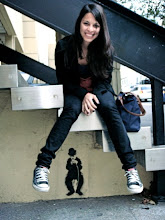
Motion pictures have the potential to generate innumerable reactions and feelings in its audience given the wide range of resources they possess to convey information. Such resources include, to mention a few, editing techniques, mise en scene, camera angles, costumes, lighting, framing, sound effects, characters dynamic, camera movement, and dialogues. Therefore, what we see on screen is not a coincidence but the result of prearranged compositions. We are usually influenced by such compositions without truly realizing it. This is why it is interesting to scrutinize single segments and shots in order to understand how the director was able to convey messages and generate feelings in our minds.
This kind of analysis is mostly revealing when we study directors that were masters in influencing their audiences with an apparently imperceptible touch such as G. W. Pabst. In Pandora’s Box, he was particularly agile in creating such effects. For instance, in the sequence of Mr. Schon’s death, we enter in Mr. Schon’s psyche and see most of the scene from his point of view. More specifically, in shot “h” we are presented with a medium two shot in which Lulu and Mr. Schon are shot from the waist up. This shot is also an over the shoulder shot, which focuses on the reflection of Lulu and Mr. Schon in the mirror of their wedding room, discreetly giving the impression that three persons are in the scene. Pabst is therefore playing with the idea of trilogy and love triangle. Moreover, by showing the back and the front of Lulu, it is suggesting that she is a two-face woman, divided between two men.
The arrangement of the costumes in this shot also correlate to the fact that the scene is a point of view shot from Mr. Schon’s mind. The fact that he had just found Lulu in a compromising situation with her old patron and his son Alwa makes him think about Lulu as a deceiving and impure woman. Her dress is consequently exposing her shoulder, as if she was trying to manipulate Mr. Schon with her repeatedly used sexuality. In addition, there is a strategic use of chiaroscuro in their costumes to convey contradictory ideas of good and bad, pure and impure. For instant, while Lulu’s dress is white and shimmer, her chest is darkened by shadows. On the other hand, Mr. Schon’s suit confines him in a dim and dark case, however, his chest is glowing with a radiant white vest. The color codes in this shot create the analogy that Lulu’s heart and soul are dark, dishonest, and full of secrets, and thus, her radiant exterior is no more than a deceiving cover. Along the same lines, Mr. Schon may appear as a controlling and gloomy men who, in reality, is good in the inside.
Another aspect of the composition of this shot is its closed frame. The two characters seem entrapped by the edges of the mirror, provoking a claustrophobic sensation. Mr. Schon appears to be pushing and entrapping Lulu inside the mirror. This shot is recorded with a shallow focus in which only the reflections in the mirror are detailed and focused. The shallow focus choice makes the point of view shot more effective because it emphasizes Mr. Schon’s anger, which is so intense that it becomes blinding. He is not able to see at Lulu directly in the eyes, he needs another medium to do so, the mirror.

No comments:
Post a Comment